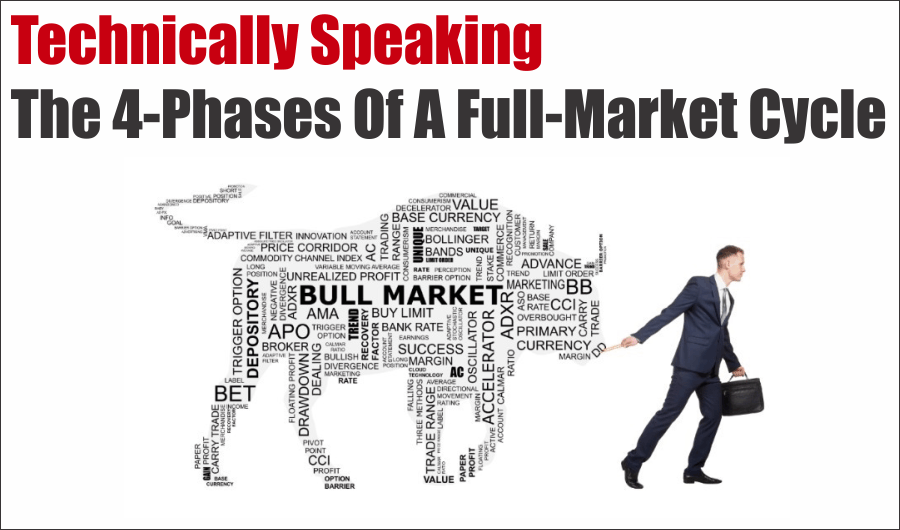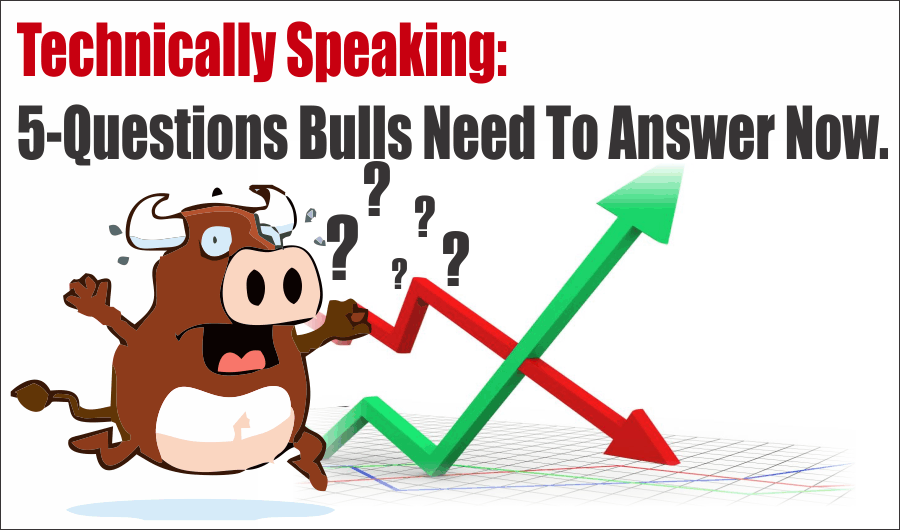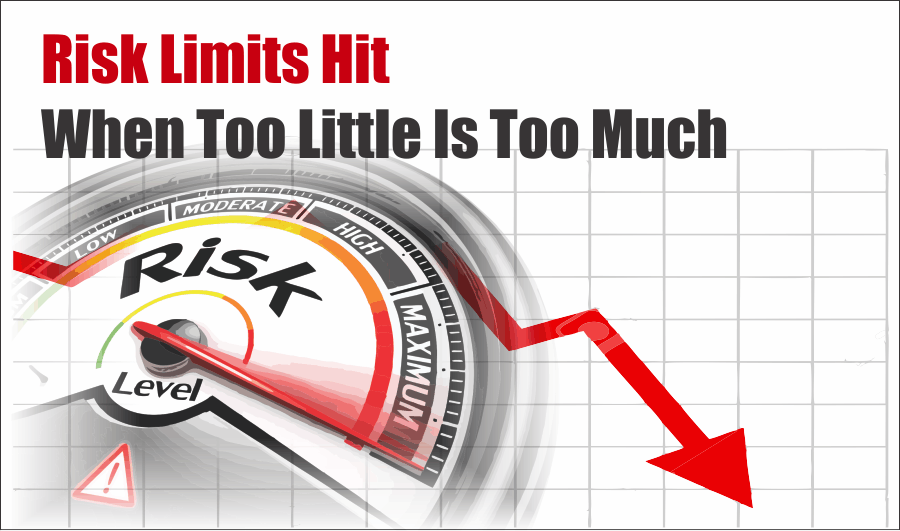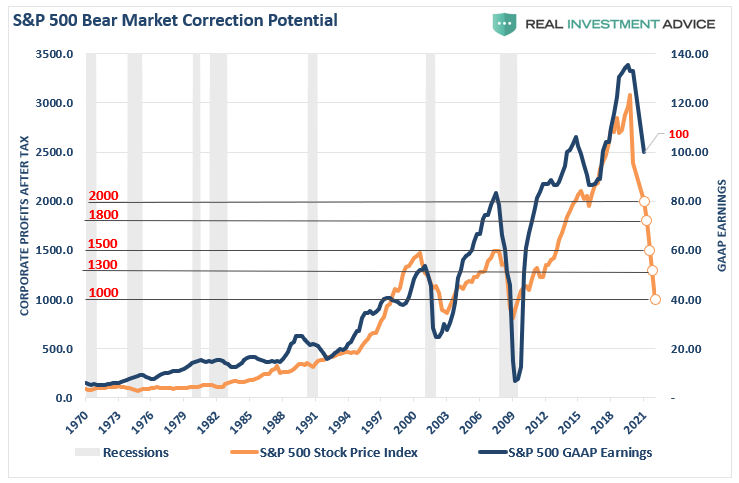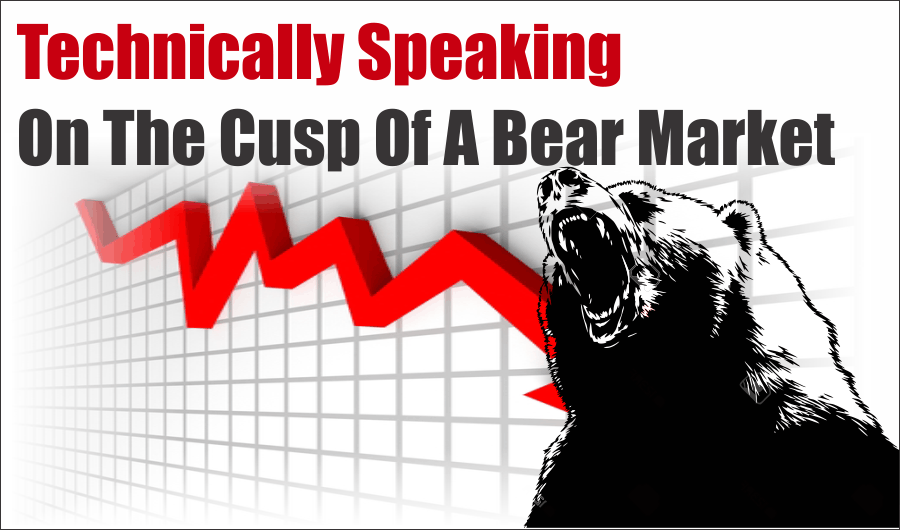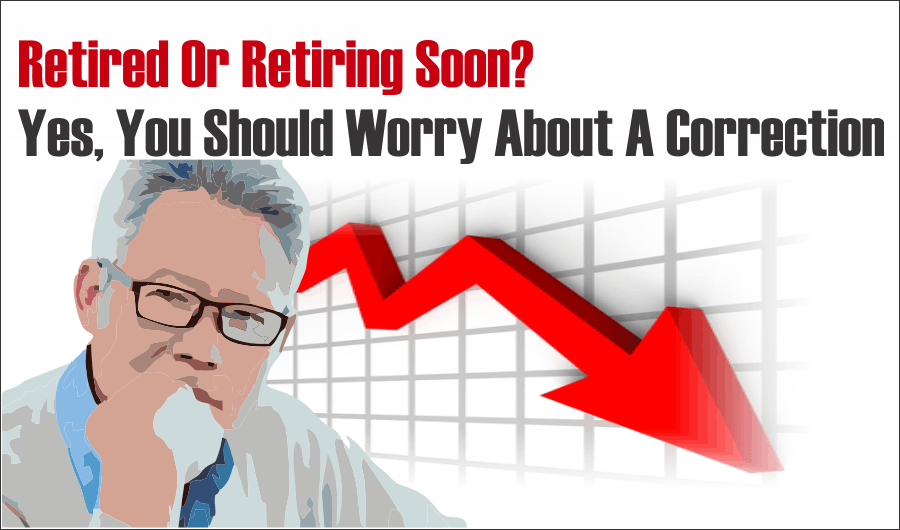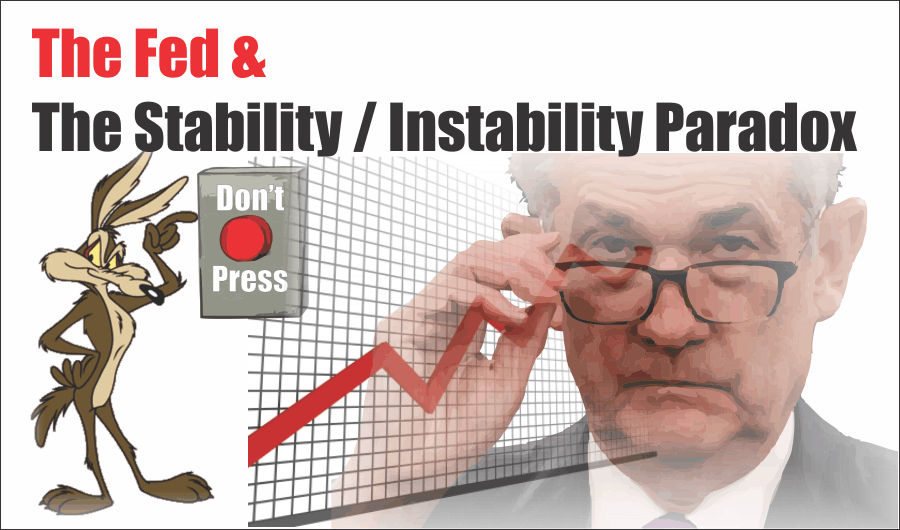Technically Speaking: The 4-Phases Of A Full-Market Cycle
Throughout history, bull market cycles make up on one-half of the “full market” cycle. During every “bull market” cycle, the market and economy build up excesses which must ultimately be reversed through a market reversion and economic recession. In the other words, “What goes up, must come down.”
Previous Employment Concerns Becoming An Ugly Reality
We have previously warned that employment data was suggesting the economy was much weaker than expected. As such, it was only a function of time until an exogenous, unexpected, event began the cascade of a recession and bear market.
Technically Speaking: 5-Questions Bulls Need To Answer Now.
The market has had a sharp rally over the last couple of weeks, which has investors feeling all "bullish" again hoping the crash in March was just an anomaly. However, there are some questions that "bullish investors" need to answer before assuming the markets are "all clear" of what ails them.
Technically Speaking: Risk Limits Hit, When Too Little Is Too Much
With a global recession underway, there are too many uncontrollable risks currently to maintain high levels of equity exposures. With the long-term bull trend now broken, cash is king.
RIA PRO: Risk Limits Hit
With a global recession underway, there are too many uncontrollable risks currently to maintain high levels of equity exposures. With the long-term bull trend now broken, cash is king.
Technically Speaking: On The Cusp Of A Bear Market
The action this year is reminiscent of previous market topping processes. Tops are hard to identify during the process as “change happens slowly.” But when the process completes, it will seem as if the change occurred “all at once.”
Technically Speaking: Sellable Rally, Or The Return Of The Bull?
The market rally on Monday was the expected reflexive bounce we discussed in this past weekend's newsletter. The question now is how far it will go, should you buy it, and what you should expect next. The risks are high; a retest of the recent lows will come sooner rather than later.
Retired Or Retiring Soon? Yes, Worry About A Correction
Yes, “retirees” SHOULD be worried about bear markets. Taking the correct view of your portfolio, and the risks being undertaken, is critical when entering the retirement and distribution phase of the portfolio life cycle.
The Fed & The Stability/Instability Paradox
“Only those that risk going too far can possibly find out how far one can go.” – T.S. Eliot Well, this certainly seems to be the path that the Federal Reserve, and global Central Banks, have decided take. Yesterday, the Fed lowered […]
